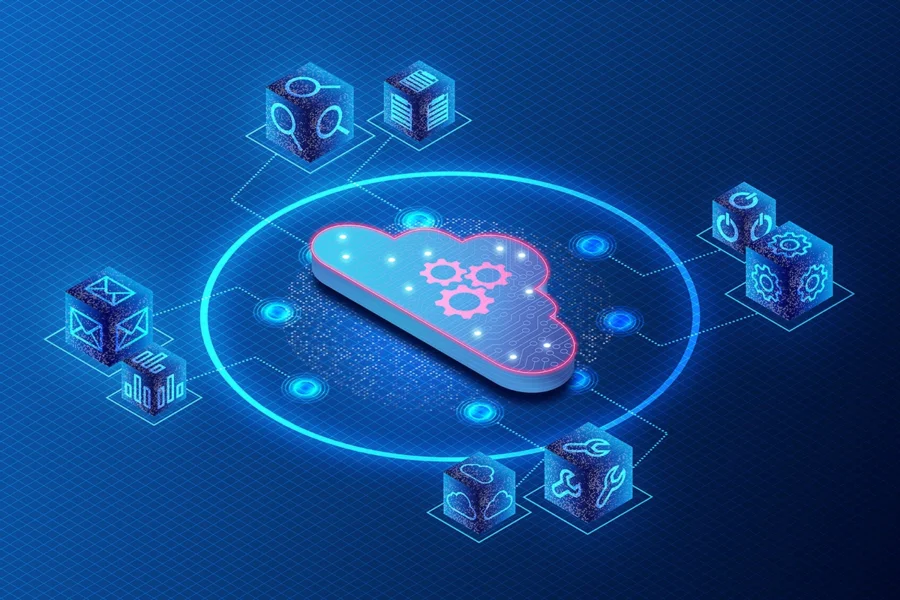หากกล่าวถึงหลักการดำเนินงานขององค์กรยุคใหม่ Agile Methodology เป็นหลักที่ได้รับการหยิบยกขึ้นมาพูดถึงอย่างต่อเนื่องในช่วงหลายปีที่ผ่านมานี้ เนื่องจากช่วยให้องค์กรสามารถบริหารงานได้อย่างยืดหยุ่นและคล่องตัว ด้วยการวางแผนและส่งมอบงานเป็นรอบ ๆ อย่างต่อเนื่อง ทำให้สามารถปรับการทำงานได้อย่างรวดเร็ว ทันกับสถานการณ์ที่เปลี่ยนไว
กระแสของการปรับใช้ Agile ได้จุดประเด็นคำถามขึ้นว่า แล้วองค์กรที่มีหลักการทำงานแบบ Waterfall ซึ่งเป็นการวางแผนการทำงานตั้งแต่ต้นจนจบเป็นรอบเดียว ควรต้องยกเครื่ององค์กรให้หันมาใช้ Agile อย่างเต็มรูปแบบเลยหรือไม่
สำหรับการเลือกหลักบริหารโครงการว่าจะเป็น Agile หรือ Waterfall นั้น องค์กรส่วนใหญ่ไม่ได้เลือกวิธีบริหารโครงการ ตามลักษณะของโครงการ แต่วิธีการบริหารโครงการนั้นถูกกำหนดมาตั้งแต่ต้นโดยวัฒนธรรมองค์กร แนวทางจากผู้บริหาร รวมถึงความชำนาญและความชอบของพนักงานในบริษัทที่เป็นตัวกำหนด หรือพูดง่าย ๆ คือ มีแนวทางในการบริหารโครงการในรูปแบบเดียว
โดย บลูบิค (Bluebik) ในฐานะที่ปรึกษาชั้นนำผู้ให้บริการดิจิทัลทรานส์ฟอร์เมชันครบวงจร ที่ได้เข้าไปให้คำปรึกษาด้านกลยุทธ์และการจัดการด้วยนวัตกรรมและเทคโนโลยีให้กับองค์กรธุรกิจขนาดใหญ่ เกี่ยวกับการบริหารโครงการเชิงกลยุทธ์ที่มีความซับซ้อนสูง พบว่าองค์กรสามารถผสมผสานหลัก Agile และ Waterfall เข้าด้วยกันไม่ว่าจะเป็นเรื่อง Mindset แนวทางการทำงาน หรือเครื่องมือต่าง ๆ เพื่อสร้างผลลัพธ์ที่ดีและเหมาะสมต่อองค์กร
Agile Waterfall คืออะไร
Agile Waterfall คือ หลักการจัดการโครงการโดยนำข้อดีของ Agile และ Waterfall มาผสมผสานกัน เพื่อบริหารโครงการให้มีประสิทธิภาพสูงสุด และเหมาะสมกับโครงสร้างองค์กรมากที่สุด
คงต้องกล่าวว่า Agile เป็นมากกว่าแค่หลักการหรือรูปแบบการดำเนินโครงการ แต่เป็นเรื่องของ Mindset ด้วย หมายความว่า องค์กรที่มีรูปแบบการทำงานแบบ Waterfall สามารถพิจารณานำ Agile มาผสมผสานกับวิธีการทำงานปัจจุบันได้ในหลายกรณี อาทิ
- ต้องการเพิ่มการประสานงาน (Collaboration) กันระหว่างทีมงานกับลูกค้าหรือฝ่ายอื่น ๆ ผ่านการสื่อสารที่เห็นกันอย่างทั่วถึง (Transparency)
- ต้องการปรับปรุงการทำงานภายในให้มีประสิทธิภาพมากขึ้นอย่างสม่ำเสมอ (Continuous Improvement) มีความยืดหยุ่นปรับเปลี่ยนได้ตามความเหมาะสมกับสถานการณ์ปัจจุบัน
- ต้องการสร้างความยั่งยืน (Sustainable Development) ในการทำงานของทีม โดยมีการส่งผลลัพธ์ออกมาอย่างสม่ำเสมอและไม่ไปสร้างภาระ (Technical Debt) ให้ไปชดเชยในวันข้างหน้า

4 แนวทางการสร้างรูปแบบการทำงานแบบ Agile Waterfall
สำหรับวิธีการนำ Agile เข้ามาผสมผสานกับ Waterfall มีหลากหลายรูปแบบ โดยวิธีการ Agile Waterfall ในบทความนี้เป็นเพียงรูปแบบหนึ่งเท่านั้น ด้วยการเริ่มต้นกำหนดภาพใหญ่ของโครงการให้เป็นแบบ Waterfall ซึ่งปกติจะประกอบด้วย 5 ขั้นตอน คือการริเริ่ม (Initiating) การวางแผน (Planning) การลงมือปฏิบัติจริง (Executing) การติดตามและควบคุมการดำเนินงาน (Monitoring & Controlling) และการปิดโครงการ (Closing) จากนั้นทำการเปลี่ยนแปลง 2 ขั้นตอนคือ การลงมือปฏิบัติจริง และการติดตามและควบคุมการดำเนินงาน ให้เป็นแบบ Agile
1. Initiating
สำหรับขั้นตอนแรกช่วงเริ่มโครงการนั้น ในภาพรวมแทบไม่ได้แตกต่างจากแบบ Waterfall มากนัก โดยสิ่งที่จำเป็นต้องทำ คือ การเขียนเหตุผลการทำธุรกิจ (Business Case) และเอกสารสรุปที่อธิบายโครงการอย่างชัดเจน (Project Charter) รวมถึงประเมินระยะเวลาและทรัพยากรที่ต้องใช้ในการทำโครงการแบบคร่าว ๆ เพื่อช่วยให้ผู้บริหารเห็นถึงภาพรวมในการลงทุน และประโยชน์ที่คาดว่าจะได้ในอนาคต
2. Planning
ขั้นตอนนี้เข้าสู่การผสมผสานข้อดีของการทำงานแบบ Agile และ Waterfall โดยแบ่งได้เป็น 2 ขั้นตอน คือ
- เก็บรวบรวมความต้องการทั้งหมดของลูกค้า (Requirement) ซึ่งนับเป็นรูปแบบการทำงานแบบ Waterfall แต่ความแตกต่าง คือ ต้องเข้าใจเป้าหมายและความต้องการที่แท้จริงของลูกค้า ซึ่งความต้องการนี้ไม่ควรจะเปลี่ยนแปลงในอนาคต เช่น ผู้ใช้ระบุว่าต้องการระบบที่ใช้ในการค้นหาสินค้าในวันแรก แต่สุดท้ายจะขอมาเปลี่ยนเป็น Platform ในการขายของ Online ไม่ได้
- นำความต้องการต่าง ๆ มาเขียนเป็น User Story และใส่ลงในรายการสิ่งที่ต้องทำทั้งหมด (Product Backlog) หากมีความต้องการเปลี่ยนแปลง (Change Request) เกิดขึ้น ก็จะถูกบันทึกไว้ใน Product Backlog
3. Executing and Monitoring & Controlling
ในส่วนของแกนการทำงานด้านในที่ประกอบด้วย การลงมือปฏิบัติจริง (Executing) การติดตามและควบคุมการดำเนินงาน (Monitoring & Controlling) สามารถปรับให้เป็นแบบ Agile ได้ง่ายที่สุดเพราะเป็นเรื่องของกระบวนการภายในที่ได้รับผลกระทบจากผู้มีส่วนได้ส่วนเสียน้อยที่สุด ไม่ว่าจะเป็นส่วนของ Ceremonies หรือ Artefacts ต่าง ๆ ที่จะเกี่ยวข้องกับฝั่งพัฒนามากกว่าฝั่งผู้ใช้
ตัวอย่างของการนำ Agile Practice มาใช้ในสองส่วนนี้ก็ เช่น การแบ่งการทำงานออกเป็น Sprint และส่งมอบให้ Product Owner ตรวจสอบระบบที่มีลักษณะเพิ่มต่อยอดจาก Sprint ก่อน ๆ (Incremental Delivery)
4. Closing
กระบวนการในช่วงนี้เป็นแบบเดียวกับรูปแบบ Waterfall ซึ่งประกอบด้วย การส่งมอบผลงานทั้งหมด การถ่ายทอดความรู้ การจัดทำ Lessons Learned รวมไปจนถึงการฉลองความสำเร็จของโครงการ แน่นอนว่าการเริ่มต้นแนวทางใหม่ ๆ จะมีความท้าทายเกิดขึ้นเสมอ ดังนั้นคำแนะนำเบื้องต้นในการนำ Agile Waterfall ไปปรับใช้ ได้แก่
- Champion Team เริ่มต้นปรับใช้หลัก Agile Waterfall กับทีมที่มีประสบการณ์ขับเคลื่อนความสำเร็จองค์กร (Proven Record of Success) เพราะทีมงานที่มีคุณภาพจะช่วยกรุยทางและช่วยจัดการกับอุปสรรคที่เกิดขึ้น
- Pluck Low-Hanging Fruit เริ่มต้นจากงานเล็ก ๆ ง่าย ๆ ที่เหมาะสมกับ Agile Waterfall เพราะการนำแนวทางใหม่มาใช้มีความยุ่งยากมากพออยู่แล้ว จึงไม่ควรเพิ่มอุปสรรคให้ทีมมากเกินไป
- Always Inspect and Adapt ซึ่ง Agile คือ การเรียนรู้และปรับปรุงไม่สิ้นสุด (Sprint Retrospective) หลักการของ Agile Waterfall ก็เช่นกันต้องสังเกตและหาวิธีปรับปรุงกระบวนการให้เหมาะกับองค์กรและโครงการอย่างสม่ำเสมอ
- Celebrate Small Win ฉลองทุกความสำเร็จของโครงการร่วมกับทีมงาน แม้จะเป็นเพียงความสำเร็จเล็ก ๆ ก็ตาม เพื่อสร้างขวัญกำลังใจและความสัมพันธ์ที่ดีภายในทีม
4 ปัจจัยส่งผลต่อความสำเร็จของ Agile Waterfall
1. Mutual Trust
ความเชื่อใจกันและกันเป็นสิ่งสำคัญระหว่างลูกค้าและทีมงาน โดยทางทีมงานต้องเชื่อมั่นว่าได้แบ่งปันเรื่องความต้องการ (Requirement) ไว้อย่างครบถ้วน และทางลูกค้าต้องเชื่อมั่นว่าทีมงานจะพัฒนาระบบอย่างสุดความสามารถภายใต้ข้อจำกัดต่าง ๆ ของโครงการ
2. Users Involvement
การทำงานแบบ Agile Waterfall นั้น User หรือผู้ใช้งานต้องเข้ามามีบทบาทในการร่วมออกแบบและพัฒนามากขึ้น เนื่องจากการส่งมอบงานเป็น Sprint ทำให้ต้องมีฟีดแบคอย่างสม่ำเสมอ เพื่อให้โครงการดำเนินไปในทิศทางที่ถูกต้อง ต่างจากแบบ Waterfall ที่ส่วนใหญ่แล้วเป็นการให้ความต้องการทั้งหมดตั้งแต่ครั้งแรก (Big Requirement Upfront) และมีฟีดแบคอีกครั้งเมื่อผลงานสุดท้ายเสร็จสิ้น
3. Team Collective Commitment
สิ่งหนึ่งที่เป็นลักษณะเหมือนกันของ Agile และ Modern Waterfall คือทุกคนเป็นเจ้าของของแผนการดำเนินโครงการร่วมกัน แผนไม่ได้เกิดจาก Project Manager หรือ Scrum Master และแนวทางการดำเนินงานต่าง ๆ เป็นการตัดสินใจร่วมกันของทีม (Self-Organizing Team)
4. Dedication
ในการทำงานแบบ Agile ทีมงานจะต้องอยู่กับโครงการตั้งแต่ต้นจนจบ ดังนั้น ผู้บริหารจึงไม่ควรดึงตัวทีมงานออกจากโครงการหรือมอบหมายให้ทำงานอื่น ๆ คู่ขนานกัน โดยเฉพาะ Project Manager, Scrum Master และ Key User แม้เป็นเพียงช่วงเวลาสั้น ๆ ก็ตาม เพื่อลดความล่าช้าจากการรอผลลัพธ์ของกิจกรรมของคนเหล่านี้
ในความเป็นจริง การดำเนินโครงการก็มีอีกหลากหลายแนวทาง ไม่ใช่เพียงแค่ Agile หรือ Waterfall ซึ่งหากเราทำความเข้าใจในข้อดี ข้อเสีย ข้อจำกัดของแต่ละแนวทาง และนำมาประยุกต์ใช้ด้วยกันในสถานการณ์ที่เหมาะสม แน่นอนว่า ย่อมส่งผลดีต่อทีมและบริษัท เพราะในโลกของการบริหารจัดการโครงการ ทุกอย่างสามารถทับซ้อนกันได้ ไม่ใช่เลือกสิ่งใดแล้วต้องทิ้งสิ่งอื่นไป
สิ่งสำคัญต้องเลือกวิธีการและปรับปรุงแนวทางตามลักษณะของโครงการ ควบคู่กับวัฒนธรรมและความชอบของทีม โดยบริษัทที่มีทีมงานที่สามารถปรับปรุงแนวทางปฏิบัติของตนเองให้เข้ากับลักษณะของโครงการ ย่อมมีข้อได้เปรียบในการแข่งขันเหนือองค์กรที่มีแนวทางการบริหารโครงการแบบเดียว
สำหรับธุรกิจที่ต้องการวางกลยุทธ์ด้าน Agile Waterfall เพื่อเพิ่มศักยภาพการแข่งขันและสร้างการเติบโตให้องค์กร บลูบิค (Bluebik) มีทีมงานผู้เชี่ยวชาญด้าน Strategic PMO บริการที่ปรึกษาการบริหารจัดการโครงการเชิงกลยุทธ์ ที่สามารถให้บริการโซลูชันครบวงจร และการวิเคราะห์ข้อมูลขั้นสูง ตั้งแต่ระดับกลยุทธ์ไปจนถึงการนำไปปรับใช้ให้เหมาะสมกับองค์กร ผู้สนใจสามารถติดต่อสอบถามหรือปรึกษาได้ที่ [email protected] หรือโทรศัพท์ 02-636-7011












